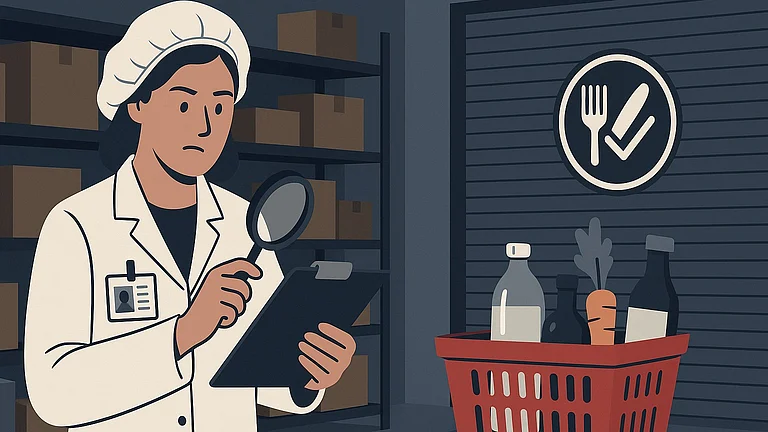Non-metro cities, specifically tier-2 areas, have become economically viable for quick commerce sector due to favourable unit economics, according to a recent report by brokerage house Emkay.
Quick Commerce Players Find Next Frontier of Growth in Tier-2 Cities
Quick commerce is gaining ground in tier-2 cities, driven by lower costs and wider product variety, with breakeven achievable at lower order volumes
With nearly 8,000 SKUs on offer compared to just around 1,000 at a typical local kirana, quick commerce players are catering to a growing appetite for variety and convenience beyond metro markets.
Although order volumes in smaller cities tend to be lower, the cost advantages of cheaper rents and wages make operating dark stores financially viable, opening new frontiers for growth.
Stores can even reach breakeven with just 800 orders, compared to 1,300 needed in tier 1 locations. The range of offerings varies across categories like daily grocery items, fashion, consoles, laptops, etc.
While mid-mile logistics expenses are somewhat higher in smaller cities, they remain manageable and don't significantly impact viability. Considering the combination of steady demand and more favourable unit economics in these regions, Emkay believes that quick commerce players have a strong runway for expansion in tier 2 markets.
"Tier-2 cities are seeing decent adoption on the back of assortments offered. Low rent pushes down the breakeven order requirements in tier-2 cities. For our FMCG coverage, we see quick commerce as an enabler; however, if not adequately capitalised, it can become a disruptive force," the report read.
Opportunity for FMCG Players
The quick commerce channel presents a structural opportunity for traditional FMCG players to liaison with the new, affluence user-base. However, traditional players would face market share related issues if they do not adapt to the change.
In the quest for AOV enhancement, platforms seek premium and value-added products from category incumbents which, if not addressed, push the platform to rely on new-age brands.
"...they offer better margin to platforms (important for sustainablity) and address nascent consumer needs better. Looking to bridge the assortment gap, select modern trade players that have quick commerce aspirations are looking to onboard D2C brands," the brokerage said.
Quick commerce players are investing in larger stores spread over 4,000 sq ft vs 2,000-2,500 sq ft earlier. It added that bulk purchase occasions are also a focus area for a few players like Zepto and Instamart, which are seeing higher preference for express deliveries in their consumer cohorts.
Experts also opined that discount retailers will continue to cater to the bulk purchase occasion for a price-sensitive consumer, while quick commerce will cater to a convenience seeking consumer. Although the required order densities are definitely lower in tier-2 cities, there was lack of a clear mandate on the success of quick commerce players in such towns.

